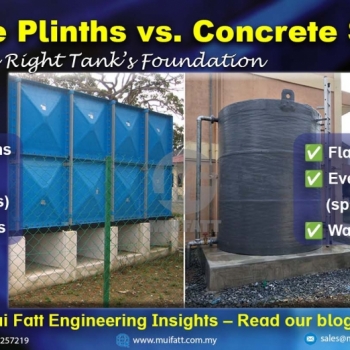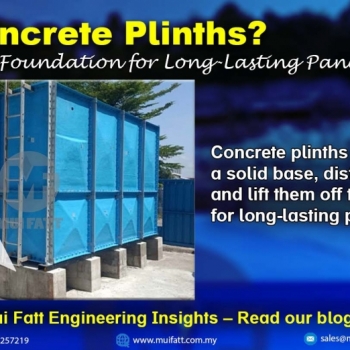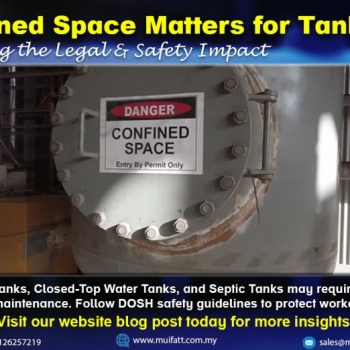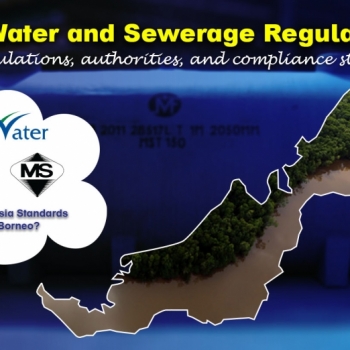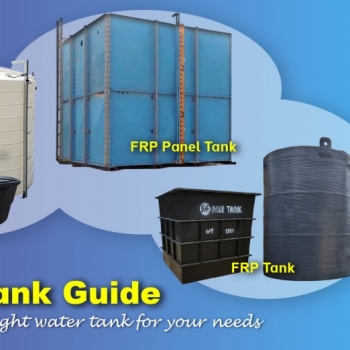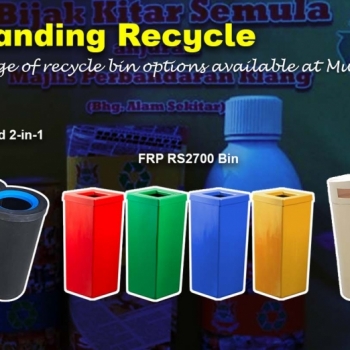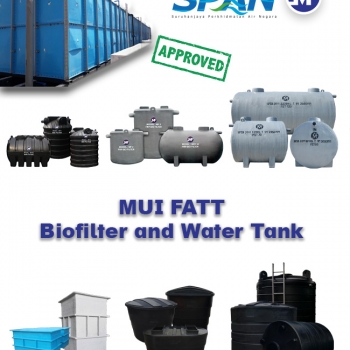Understand the key differences between concrete slabs used for water tanks and septic tanks. Learn about their functions, compliance standards, structural needs, and when to use each, so you can make the right decision for a safe and long-lasting installation.
Mui Fatt Engineering Insights - Tank Concrete Slab
06 Jun 2025
- Key Takeaways
- Why Concrete Slabs Are Required for Tanks
- Differences Between Water Tank and Septic Tank Concrete Slabs
- Do Concrete Slabs Ease Pipe Installation?
- Is a Concrete Slab Mandatory for Tank Installation?
- Do All Material Tanks Require Concrete Slabs?
- Potential Hazards of Not Using a Concrete Slab
- Frequently Asked Questions (FAQs)
Key Takeaways
-
Concrete slabs provide the foundation of safety and durability for both water and septic tanks.
-
They offer load distribution, stability, and maintenance access benefits.
-
Slab requirements may differ between water and septic systems, but both benefit significantly.
-
Regulatory standards in Malaysia often necessitate slabs for compliance.
-
Failing to install a slab can result in structural failure, leaks, and contamination risks.
Water tanks and septic tanks are critical components of both residential and commercial infrastructure. Yet, many overlook the importance of what supports them—the concrete slab. Whether for a fresh water storage tank or a septic system, the slab beneath plays a crucial role in ensuring long-term functionality and safety. In this article, we will explore the purpose of concrete slabs, the differences between water and septic tank installations, and why they are vital from both an engineering and regulatory perspective.
Why Concrete Slabs Are Required for Tanks
Concrete slabs provide a level and stable foundation that ensures the tank’s weight is evenly distributed across the ground. This distribution prevents uneven settlement, which could otherwise cause structural issues such as cracks, leaks, or panel misalignment. In addition to supporting the tank’s static load, a concrete slab enhances the structural integrity and lifespan of the tank by preventing movement caused by dynamic loads such as water fluctuation or waste displacement.
Furthermore, a concrete slab elevates the tank above ground level, reducing direct soil contact that could introduce moisture, corrosion, or pests. This protective layer acts as a safeguard against environmental factors that might compromise the tank’s structure and performance over time. Whether it’s a water tank or a septic tank, a well-constructed concrete slab forms the backbone of a durable and reliable system.
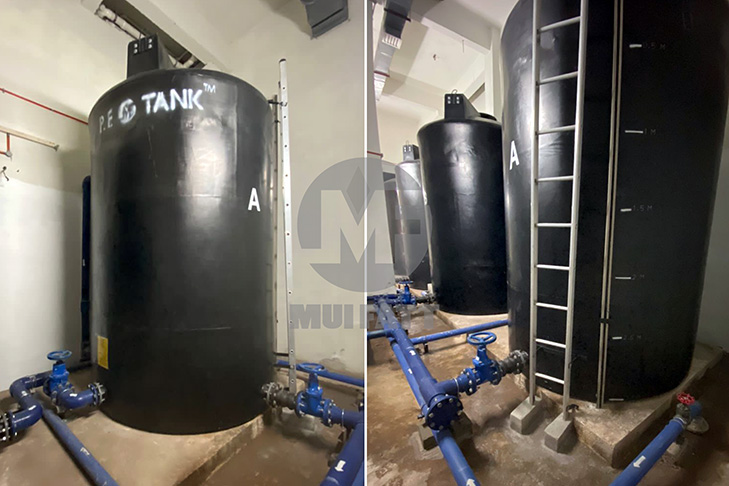
Differences Between Water Tank and Septic Tank Concrete Slabs
While both water and septic tanks benefit from concrete slabs, their functional requirements differ slightly.
For water tanks, the slab primarily supports the tank’s full water load and ensures a level surface for seamless pipe connections and water flow. The main concern is structural stability and prevention of leaks due to uneven settling.
In contrast, septic tanks face additional challenges. Besides bearing the tank’s weight, the concrete slab prevents the tank from sinking into lower ground, especially in areas with soft soil or high water tables. This ensures that the tank remains level and stable, reducing the risk of tilting or disconnection from the inlet and outlet pipes. The slab also contributes to a sealed system that minimizes the risk of environmental contamination and odor leakage, while enhancing the structural integrity and lifespan of the installation.
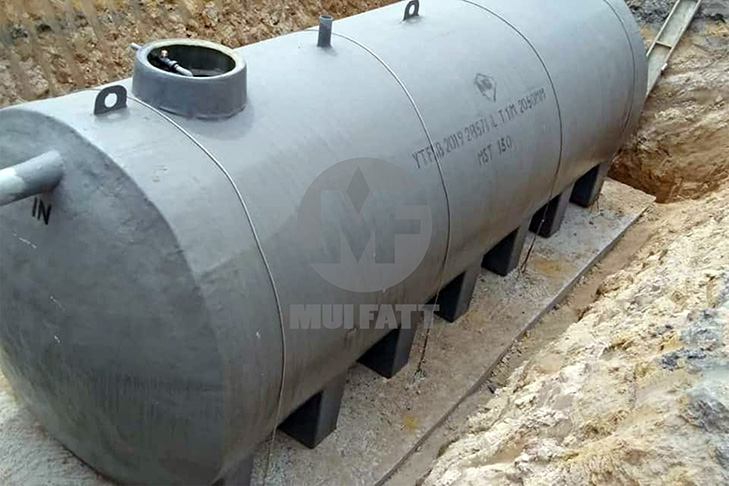
Compare concrete plinths vs slabs for tank foundations - Mui Fatt Engineering Insights - Concrete Slabs for Water vs Septic Tanks
Do Concrete Slabs Ease Pipe Installation?
Absolutely. Installing pipes around a tank on compacted or uneven soil can result in misalignments, leaks, or maintenance challenges. A concrete slab provides a flat, predictable surface, making it easier to align and secure inlet and outlet pipes. This not only simplifies installation but also reduces the risk of damage during backfilling and minimizes potential maintenance issues in the future.
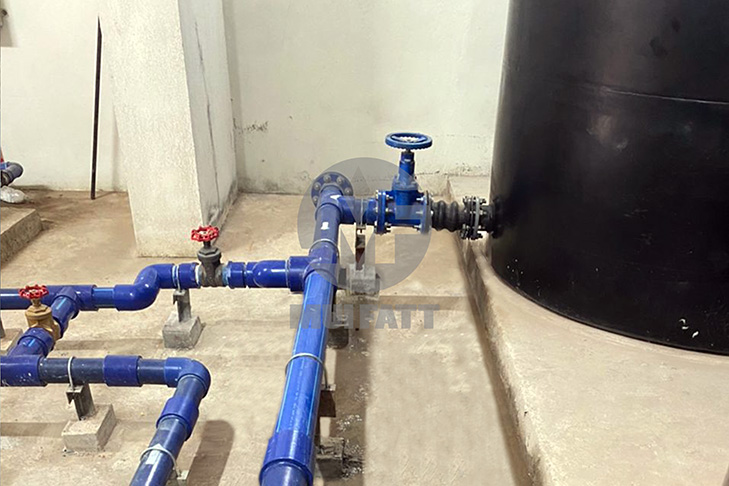
Is a Concrete Slab Mandatory for Tank Installation?
For FRP and larger PE tanks, concrete slabs are not just recommended—they are often mandated by best practices and regulatory requirements. In Malaysia, compliance with MS standards, SPAN approvals, and local authority regulations (including JKR and DOSH) generally requires the use of concrete slabs for water and septic tank installations. This ensures a stable, level foundation that supports the tank’s weight, reduces the risk of settlement, and enhances the tank's structural integrity and lifespan.
While some lightweight polyethylene (PE) tanks, particularly those made by rotomolding, may be temporarily installed on well-prepared and compacted ground, this approach is not advisable for long-term use. Compacted soil may shift over time, leading to uneven support, misalignment of pipes, and potential structural failure—issues that are especially critical for septic systems, where leaks could cause environmental contamination.
In summary, while compacted ground might be an option for very light and temporary installations, a concrete slab is the standard solution for permanent setups, particularly for septic tanks where safety and containment are paramount.
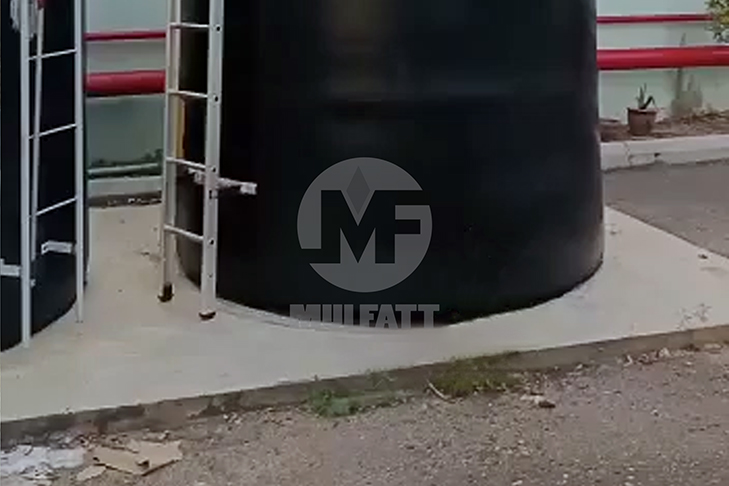
Do All Material Tanks Require Concrete Slabs?
While the specific design and material of a tank—be it FRP, GRP, SMC, PE, or steel—affect structural requirements, the need for a stable foundation remains universal. Concrete slabs offer a best practice solution for long-term tank stability and maintenance access. Lightweight tanks (such as certain rotomolded PE tanks) might be temporarily installed on compacted bases, but for permanent installations, especially of septic tanks, concrete slabs are mandated to avoid shifting and ensure compliance.
Potential Hazards of Not Using a Concrete Slab
Neglecting a concrete slab during tank installation can lead to several serious issues:
-
Uneven Settlement: Can cause misalignment, cracks, and leaks.
-
Structural Instability: Increases the risk of the tank tipping or shifting under load.
-
Pipe Misalignment or Disconnection: Improper support can lead to pipe leaks and costly repairs.
-
Increased Corrosion and Contamination Risk: Direct contact with soil can introduce moisture and pests.
-
System Failure: Particularly critical in septic systems, where leaks can lead to environmental contamination and odor problems.
Concrete slabs are more than just a base—they are the backbone of safe, durable, and compliant tank installations. From supporting the weight of stored water to ensuring the integrity of septic systems, a concrete slab is essential.
Discover Our Successful CSR Project - CSR Spotlight: PE Tank Donation to SMK Pulau Indah, where the school constructed proper concrete slabs for all three tanks.
Frequently Asked Questions (FAQs)
Is a concrete slab mandatory for all water tank installations?
While not always legally mandated, a concrete slab is recommended for structural integrity and compliance with standards.
Can a septic tank be installed without a slab?
It’s risky. Without a slab, septic tanks can shift, leak, or collapse, potentially causing environmental hazards and compromising wastewater containment.
Does a concrete slab make pipe connections easier?
Yes. It provides a level base for precise alignment, reducing installation errors and future maintenance issues.
Can PE tanks be placed on compacted soil bases?
Only for temporary or very small-scale installations. Permanent setups, especially of larger tanks, require a concrete slab to prevent shifting and instability.
Are slab requirements the same for septic and water tanks?
Similar, but septic tanks need additional sealing considerations to prevent leaks and odors.
#Watertankconcreteslab #septictankconcreteslab #concretebasefortanks #Malaysiatankinstallation #tanksupport #septicsystemfoundation
Disclaimer:-
The information provided on this website is for general informational purposes only and does not constitute legal advice. While we strive to ensure the accuracy and reliability of the information provided, we make no representations or warranties of any kind, express or implied, about the completeness, accuracy, reliability, suitability, or availability concerning the information contained herein. Any reliance you place on such information is therefore strictly at your own risk. This website may contain links to other third-party websites. Such links are only for the convenience of the reader, user, or browser; which we do not warrant, recommend, endorse, or assume liability for the contents of the third-party sites.
Keep in touch with us should you be keen on receiving timely updates from us
- Website - https://www.muifatt.com.my/home/
- Facebook - https://www.facebook.com/muifattmarketing
- Instagram - https://www.instagram.com/muifattmarketing/
- Google - https://goo.gl/maps/WxVY13gNcaRTS7Jp6
- Youtube - http://www.youtube.com/@MuiFattMarketing
- TikTok - https://www.tiktok.com/@muifattmarketing
- LinkedIn - https://www.linkedin.com/company/mui-fatt-marketing-sdn-bhd-
- Linktree - https://linktr.ee/muifattmarketing
- Shopee - https://www.shopee.com.my/muifattmarketing
- Lazada - https://www.lazada.com.my/shop/mui-fatt-marketing
Recent Blog
Mui Fatt Engineering Insights - Concrete Plinths vs Slabs
Compare concrete plinths and slabs to understand their roles in water, septic, and sectional tank installations. Learn key differences in design, application, and compliance.
Mui Fatt Engineering Insights - Panel Tank Concrete Plinth
Explore the essential role of concrete plinths and C-channels in sectional panel tanks. Learn why they’re standard, how they enhance stability and maintenance, and how Malaysia’s regulations influence their use.
Why Confined Space Safety Regulations Matter in Tank Work
Working inside FRP or PE tanks, like panel tanks, septic tanks, or SSTS, may involve confined space hazards. Understand why compliance with DOSH regulations is essential for your project’s safety and success.
Essential Guidelines for Water & Septic Tanks in Borneo
Understand the regulations and guidelines for water and septic tanks in Borneo, plus compliance with SPAN, IWK, and SIRIM standards in Malaysia.
Essential Guide to Choosing the Right Water Tank for Your Needs
A step-by-step guide on water tank considerations, including material, size, application, and more. Learn how to pick the perfect tank for your needs.
Understanding Recycle Bins: Types, Uses, and Regulations in Malaysia
Learn the differences between recycle and recycling bins, the types of bins by color and material, and why they're essential for waste management in Malaysia. Discover our FRP and PE recycle bins for your needs.
Why SPAN-Approved Water and Septic Tanks Are Essential for Your Project
In this blog, we explore why using SPAN-approved water and septic tanks is critical for compliance, safety, and reliability in construction projects across Malaysia. Learn how SPAN certification ensures the quality of your tanks, and why it’s essential for maintaining water service standards under Act 655. Discover how various end-user products such as water tanks and septic tanks adhere to this legislation and the consequences of non-compliance, emphasizing the importance of strict adherence for safeguarding Malaysia's water resources and public well-being.




